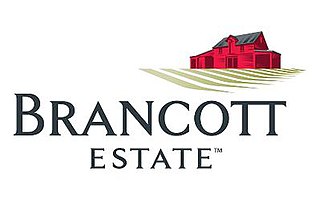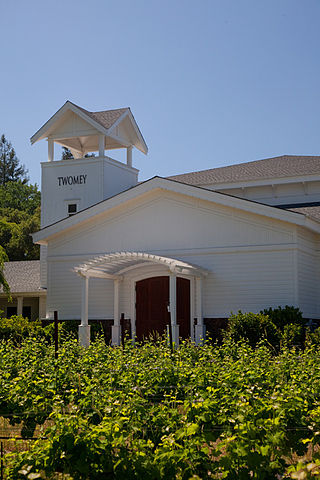
Malbec is a purple grape variety used in making red wine. The grapes tend to have an inky dark color and robust tannins, and are known as one of the six grapes allowed in the blend of red Bordeaux wine. In France, plantations of Malbec are now found primarily in Cahors in South West France, though the grape is grown worldwide. It is increasingly celebrated as an Argentine varietal.

Chile has a long history in the production of wine, with roots dating back to the 16th century when the Spanish conquistadors introduced Vitis vinifera vines to the region. In the mid-19th century, French wine varieties such as Cabernet Sauvignon, Merlot, Carmenère, and Franc were introduced. During the early 1980s, the Chilean wine industry underwent a renaissance with the introduction of stainless steel fermentation tanks and the use of oak barrels for aging. This led to a rapid growth in exports as quality wine production increased. The number of wineries in Chile rose from 12 in 1995 to over 70 in 2005.

New World wines are those wines produced outside the traditional winegrowing areas of Europe and the Middle East, in particular from Argentina, Australia, Canada, Chile, Mexico, New Zealand, South Africa and the United States. The phrase connotes a distinction between these "New World" wines and those wines produced in "Old World" countries with a long-established history of wine production, essentially in Europe, most notably: France, Italy, Germany, Spain and Portugal.

Argentina is the fifth largest producer of wine in the world. Argentine wine, as with some aspects of Argentine cuisine, has its roots in Spain. During the Spanish colonization of the Americas, vine cuttings were brought to Santiago del Estero in 1557, and the cultivation of the grape and wine production stretched first to neighboring regions, and then to other parts of the country.

New Zealand wine is produced in several of its distinct winegrowing regions. As an island country in the South Pacific Ocean, New Zealand has a largely maritime climate, although its elongated geography produces considerable regional variation from north to south. Like many other New World wines, New Zealand wine is usually produced and labelled as single varietal wines, or if blended, winemakers list the varietal components on the label. New Zealand is best known for its Marlborough Sauvignon Blanc, and more recently its dense, concentrated Pinot Noir from Marlborough, Martinborough and Central Otago.

Brancott Estate is the brand adopted since 2010 by Pernod Ricard for New Zealand's largest wine producer, formerly Montana Wines, which now operates as the New Zealand division of Pernod Ricard Winemakers. The name comes from its Brancott winery in Blenheim, and was chosen to reduce confusion in the United States market with wines from the state of Montana.

Coquimbito is a rural district in the Maipú Department, Mendoza Province, Argentina. It is located in the southeast of the metropolitan area of Mendoza, and is administratively part of the municipality of Maipú. The name refers to the Chilean port city of Coquimbo.
The state of Oregon in the United States has established an international reputation for its production of wine, ranking fourth in the country behind California, Washington, and New York. Oregon has several different growing regions within the state's borders that are well-suited to the cultivation of grapes; additional regions straddle the border between Oregon and the states of Washington and Idaho. Wine making dates back to pioneer times in the 1840s, with commercial production beginning in the 1960s.

Columbia Winery is a Washington state winery located in Woodinville, Washington. The winery is currently owned by E & J Gallo Winery. The winery was founded in 1962 as Associated Vinters by several former professors at the University of Washington. In 1979, the winery hired David Lake as head winemaker and under his stewardship, Columbia Winery was the first winery in the state of the Washington to produce varietal wines of Cabernet Franc, Pinot gris and Syrah. In 1983, the winery released wines under its current name. In 1988, the winery moved to its current location in Woodinville wine country. Due to failing health, David Lake retired from Columbia in 2006. In 2006, Kerry Norton (formerly of Covey Run Winery was hired as Director of Winemaking. In June 2008, Columbia Winery were sold by Constellation Brands to newly formed Ascentia Wine Estates, which in turn sold Columbia to Gallo in 2012.

California wine production has a rich viticulture history since 1680 when Spanish Jesuit missionaries planted Vitis vinifera vines native to the Mediterranean region in their established missions to produce wine for religious services. In the 1770s, Spanish missionaries continued the practice under the direction of the Father Junípero Serra who planted California's first vineyard at Mission San Juan Capistrano.

British Columbia wine is Canadian wine produced in the province of British Columbia. Wines made from 100% British Columbia grapes can qualify for classification under one of British Columbia's two classification systems, depending on the variety, the winemaking techniques employed, and various other restrictions.

Mendoza Province is Argentina's most important wine region, accounting for nearly two-thirds of the country's entire wine production. Located in the eastern foothills of the Andes, in the shadow of Aconcagua, vineyards are planted at some of the highest altitudes in the world, with the average site located 600–1,100 metres (2,000–3,600 ft) above sea level. The principal wine producing areas fall into two main departments-Maipú and Luján, which includes Argentina's first delineated appellation established in 1993 in Luján de Cuyo. The pink-skinned grapes of Criolla Grande and Cereza account for more than a quarter of all plantings but Malbec is the region's most important planting, followed closely by Cabernet Sauvignon, Tempranillo and Chardonnay. Mendoza is considered the heart of the winemaking industry in Argentina with the vast majority of large wineries located in the provincial capital of Mendoza.
Cono Sur Vineyards & Winery is a subsidiary of Concha y Toro Winery and is the third largest exporter of bottled wine in Chile. Established in 1993, its name is a reference to its location in the Southern Cone of South America and a play on the word connoisseur. In 2015, it was the official wine of the Tour de France.
Kingston Family Vineyards is a Chilean winery located in the Casablanca Valley of Chile. Considered pioneers for growing red wine grapes in a valley known for whites, they have been called "one of the area’s most promising producers". The vineyard was founded in the early 1990s by the Kingston Family.

The Bespoke Collection is a wine producer and lifestyle brand based in Yountville, California in the United States. The company comprises two wine labels: Blackbird Vineyards and Recuerdo Wines, and a wine, art and design gallery called Ma(i)sonry Napa Valley. Bespoke Collection also has an additional art gallery in St. Helena, California called I. Wolk Gallery.

Twomey Cellars is a California winery. It was established in 1999 by the Duncan Family, who have operated the successful Silver Oak Cellars in California since 1972. The Duncan Family started Twomey Cellars to pursue varietals other than Cabernet Sauvignon. Twomey has three wineries: one in Calistoga in the Napa Valley; one in Healdsburg in the Russian River Valley; one in Philo in Anderson Valley, and produces mainly Pinot noir and Sauvignon blanc. Twomey’s Sauvignon blanc is a blend of Sauvignon blanc grapes from their estate vineyards at their wineries in Napa Valley, Anderson Valley, and Russian River Valley.

Dominio del Plata is a medium-sized winery located in the Lujan de Cuyo region of Mendoza Argentina. It was founded in 1999 by enologist and entrepreneur Susana Balbo.

Lagarde or Bodega Lagarde is a family-owned winery located in the Luján de Cuyo Department located in the west of the Mendoza Province, Argentina and was founded in 1897. Lagarde consists of five Mendoza vineyards and is currently owned and managed by the Pescarmona family. The winery is currently run by the third generation Pescarmonas: Sofia Pescarmona and Lucila Pescarmona, with Juan Roby Stordeur as the winemaker since 2002.

Kenwood Vineyards is a winery in Kenwood, California, located on Highway 12 in the Sonoma Valley wine country. It is currently owned by Pernod Ricard Winemakers.
Terrazas de los Andes is a winery located in Luján de Cuyo in the province of Mendoza, Argentina.

















